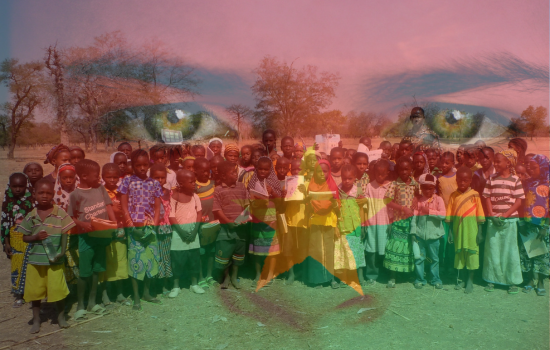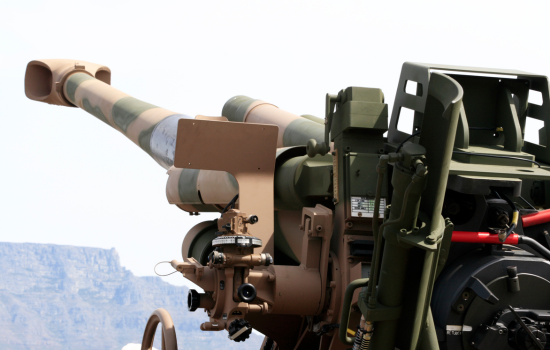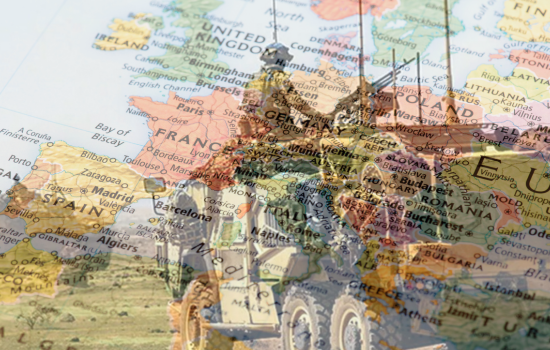Jihad in Uzbekistan Suicide bombings spread to Uzbekistan
Police and military clashed with suspected terrorists, including three suicide bombers, 22 people were killed in a third day of violence started on 29 March 2004 in the Uzbek capital during a sweep to round up Islamic militants. According to Associated Press, attacks continued on 30 March as well centered in the northern Yalangach neighborhood, near the official home of President Islam Karimov.
Police stopped a small red car driven by 4 women and two alleged suicide female terrorists jumped out and detonated explosive-laden belts, killing themselves and three police officers and injuring five more policemen.
Uzbekistan’s president Karimov, has blamed the violence on Islamic extremists, and said several arrests had been made, stating that backing for the attacks might have come from a banned radical group that has never before been linked to terrorist acts — Hizb ut-Tahrir, or the Party of Liberation.
The Uzbek arena after 9/11
Uzbekistan was among the first countries to offer practical anti-terrorist support to the United States in the wake of the Sept. 11 attacks. Indeed, it became the first of Central Asia’s former Soviet republics to permit U.S. troops and aircraft on its territory. Around 1, 500 U.S. Air Force and Special Operations personnel have been deployed to the country’s Khanabad Air Base, which lies just 90 miles from the Afghan border. Such assistance as the Uzbek President Islam Karimov has extended has been motivated less by altruism than by the fact that America represents a powerful new ally in his ongoing counterinsurgency campaign against the Islamic Movement of Uzbekistan (IMU). [In the Spotlight: Islamic Movement of Uzbekistan (IMU)]
The American authorities believe bin Laden supplied most of the funding for setting up the IMU, with some Uzbek and Tajik officials saying the al Qaeda leader encouraged Yuldeshev and Namangani to organize such a group in the first place, which declared a jihad against the Uzbek government and sought to establish an Islamic state in Uzbekistan.
Islamic Movement of Uzbekistan (IMU)
[Imu Movements May Press Tajikistan To Forefront Of Security Concerns
Davron Vali: 4/18/02. Eurasianet.org]
Ideology
Description
Leadership
Juma Namangani: Namangani fought with the United Tajik Opposition (UTO) in the Tajik Civil War (1992-1997). In August 1999, he led a group of 800 militants into southern Kyrgyzstan, where they captured villages and hostages and threatened to attack Uzbekistan.[4] In August 2000, IMU rebels led by Namangani made incursions into southern Uzbekistan, mountainous areas just outside of Tashkent, and several areas in southern Kyrgyzstan. In July 2001, rebels attempted to capture a television relay station in Kyrgyzstan that transmits programs to Kyrgyzstan and Uzbekistan. Namangani is also currently believed to be training Islamic militants in northern Afghanistan. Sources indicate that he may have been appointed a “deputy” of Osama bin Laden sometime in 2001 his present location is unknown. [5]
In November 2000, Yuldosh and Namangani were both sentenced to death in absence for bombings that were conducted in Tashkent, Uzbekistan in February 1999.
Group Ties
The Islamic Liberation Party- (Hizb- ut-Tahrir al-Islami)
In 1974, Dr. Salih Sirriyyah, a Palestinian member of the party led the Islamist group that carried out the first terrorist operation—against the military academy in Cairo—in the era of the Islamic revival in Egypt.
Another former member and one of the founders of the Islamic Liberation Party, Sheikh As`ad Bayyoud al-Tamimi was the spiritual leader of one of the fractions of the Palestinian Islamic Jihad was quiet influential in the Gulf States.
According to the Uzbek authorities, the Islamic Liberation Party was behind the attempt to assassinate Islam Karimov, the Uzbek president, in February 1999.
The party has been involved in political subversion and terrorism against the Jordanian regime since the 1950s, and was since been outlawed in Jordan and many of it members arrested. Early this year, there was another wave of arrests among its members and supporters in Jordan and Syria. More recently, in February 2000, members of the party were involved in violent clashes with the Lebanese Armed Forces in northern Lebanon.
The Method of Hizb- ut-Tahrir
The method adopted by Hizb ut-Tahrir to convey the da’wah is the Islamic Law derived from the shareah of the Messenger of Allah. Muslims nowadays live in Dar al-Kufr(The Disbelievers), because they are governed with laws other than the revelation of Allah, so their land resembles Mecca where the Messenger of Allah was first sent as a Messenger. Therefore, it is necessary to take the Messenger of Allah’s shareah as an example in conveying the da’wah.
By studying the life of the Messenger of Allah in Mecca until he had managed to establish the Islamic State in Medina, it is evident that he went through clearly defined stages, in each of which he used to perform specific clear actions. So the Hizb-ut Tahrir took from that the method of action, the stages of its action and the deeds, which it has to perform during these stages in accordance with the deeds that the Messenger of Allah performed during the stages of his work.
Based on these elements, Hizb-ut-Tahrir defined its method of work into three stages:
The First Stage: The stage of culturing to produce people who believe in the idea and the method of the Party, so that they form the Party group.
The Second Stage: The stage of interaction with the Islamic Ummah, to let the Ummah embrace and carry Islam, so that the Ummah takes it up as its issue, and thus works to establish it in the affairs of life.
The Third Stage: The stage of establishing government, implementing Islam generally and comprehensively, and carrying it as a message to the world [8]
The Current Jihad in Uzbekistan
President Karimov and other senior Uzbek officials have frequently warned that Wahhabi Islamist radicals are amassing greater operational capability under the auspices of the Afghan Taliban, and that their ultimate goal is to destabilize neighboring states as well. Tajikistan, Kyrgyzstan and Uzbekistan all share a common enemy in the Afghan Wahhabi militants.
In early August 2000, while the Mujahideen were in the process of preparation and transferring supplies and men to strategic locations in Uzbekistan, the Uzbekistan Government attacked them. Attacks took place in the Fargana Valley, an area regarded as the center of radical Islam, lasting several days. The Islamists attacks were predominantly on the Uzbekistan Government airplanes, helicopters, artillery and fighting vehicles. The authorities arrested hundreds as suspects involved in terror attacks and affiliation with Radical Islamic Groups.
Prior to11 September 2001 attacks in the U.S, it seems that there was radicalization of Hizb-ut-Tahrir the so-called the political and the intellectual struggle. This has transformed to a struggle against the Kufr (The West) “colonialist states” which have domination and influence on the Islamic countries mainly in Central Asia and the Caucasus, on territories of the former Soviet Union. The challenge against colonialism in all its intellectual, political, economic and military forms, involves exposing its plans, and revealing its conspiracies in order to deliver the Ummah from its control and to liberate it from any effect of its influence. [9]
According to Islamic publications a struggle that should be launched against the rulers in the Arab and Muslim countries, by exposing them, taking them to task, acting to change them whenever they denied the rights of the Ummah or neglected to perform their duty towards her, or ignore its affairs, and whenever they disagreed with the rules of Islam, and acting also to remove their regimes so as to establish the Islamic rule in its place.
“The fact that the group does not use material power to defend itself against the “rulers” is of no relevance to the subject of Jihad, because Jihad has to continue till the Day of Judgment. So whenever the disbelieving enemies attack an Islamic country it becomes compulsory on its Muslim citizens to repel the enemy. The members of Hizb ut-Tahrir in that country are a part of the Muslims and it is obligatory upon them as it is upon other Muslims, in their capacity as Muslims, to fight the enemy and repel them. Whenever there is a Muslim Emir who declares jihad to enhance the Word of Allah and mobilizes the people to do that, the members of Hizb ut-Tahrir will respond in their capacity as Muslims in any country where the general call to arms will be proclaimed.” [https://www.hizb-ut-tahrir.org/urdu/tareef/content.html]
The goals of the current Jihad in Uzbekistan as published on Islamic Websites are “to defend Muslim blood, property and honor firstly, and then to remove the oppressive Zionist regime of Islam Karimov (The President), replacing it with a Shreah Government” [10]. This radical Islamic perception merges with the Global Jihad ideology published by Osama Bin Laden and his associates, purports to be a religious ruling, or fatwa, against the “Crusaders and Jews”. The Mujahideen have made it clear: “We are not fighting Muslims and are not fighting civilians. The President (of Uzbekistan) is a Zionist Jew and his army is communists who know what they are doing. They are not just obeying orders under pressure, but actively taking part in oppressing their ‘own’ people, the Uzbek Muslims.”
This battle is clearly one of Islam versus Kufr (disbelief), and justice versus tyranny. Actually, it is a battle of Islamic forces in Uzbekistan against a coalition of disbelieving nations backing Karimov.” [11]
The Ongoing Counter Terrorism Campaign
The Uzbek government claims that Afghanistan is a center of international terrorism, religious extremism and worldwide drug trafficking, and that developments there could spiral out of control and threaten neighboring countries. Uzbekistan has suffered from recurring incidents of terrorism aimed at establishing an Islamic state in the country. In July 2001, President Karimov attended as an observer a summit meeting of the “Shanghai Five”–China, Russia, Tajikistan, Kyrgyzstan, and Kazakhstan. The primary focus of the meeting was the danger of Islamist terrorists striking across the borders from Afghanistan. Uzbekistan has also sought assistance from Russia in countering the threat of Islamist extremism.
On September 2001 the United States added the Uzbek Islamic movement to its list of foreign terrorist organizations. U.S. officials say that there is ample evidence that the group is connected with Osama bin Laden, wanted in the United States for terrorism. This move is in keeping with the U.S. effort to isolate international terrorist groups and supervise financial contributions to them, in particular organizations connected with bin Laden. The U.S. Congressional Research Service reported that the Uzbekistan Islamic Movement is part of Osama bin Laden’s al-Qaeda network.
Within the framework of the Global War against terrorism led by the U.S, Uzbekistan faces an ongoing challenges in regard to the International Terrorism threats posed by the Radical Islamic Groups affiliated to Ben Laden’s fled operatives in parts of the Uzbek soil.
During the anti-terrorism campaign, a large number of the IMU apparently decided to avoid combat. Some analysts suspect that many militants found refuge in Tajikistan, where the IMU reportedly maintained training and supply bases. Experts also suggest IMU sympathizers in the Uzbek Ferghana Valley could be providing shelter and supplies to fighters arriving from Afghanistan.
Uzbekistan authorities are concerned about Islamic radicals, especially those affiliated with the Islamic Movement of Uzbekistan (IMU). Some regional analysts say the IMU is now regrouping after suffering substantial loses during the US-led offensive against terrorism in Afghanistan. US intelligence sources have estimated that the IMU is capable of recruiting and training a multinational force of up to 5,000 operatives within a year. The rapid expansion of opium and heroin trafficking out of Afghanistan indicates that Islamic radicals will have access to funds to pay and equip new recruits.
Uzbekistan’s future Counter Terrorism Objectives Moderate Islam
In the city of Bukhara (500 kilometers or 300 miles west of Tashkent), the center of the Sufi Naqshbandi order in Central Asia, the Uzbek authorities are not opposing the spread of the Naqshbandi order and even support it. They are using Sufism as a distinctive counterweight to radical Islam groups within the IMU and the international Islamic party Hizb-ut-Tahrir, which campaigns for the unification of Muslims throughout the world into a single Khilafah (Islamic Rule) over the whole world. Sufism is a moderate mystical branch of Islam, rooted in the attempt to reach God through personal experience free of political aspirations.
Intelligence
Enhanced cooperation between intelligence agencies in the immediate neighboring countries in central Asia, Arab countries in the Middle East and the U.S coincided with developing intelligence capabilities in gathering, assessment and operations.
Monitoring the da’wah activities in specific communities and foreign Islamic clerics with connections to radical groups in Arab countries and the Middle East. A close touch with financial support flowing through Islamic charity founds motivated by radical ideology (See in the Palestinian case the” Union For Good” and its dozens affiliated charity found world wide) [12]. If Hizb-ut-Tahrir is on the track of a real path towards radicalization, it should be on the top priority of the intelligence efforts not only in Uzbekistan. Arab and western intelligence services as well as Israel should take into their consideration this threat.
“Narcobusiness”- Drugs Trafficking
The main task of the international terrorists is to keep the drug traffic going, as the drug business has been and remains the main source of finance for international terrorism.
In 1999 and 2000, the Kirghiz army conducted lengthy military operations against the gunmen of the Islamic Movement of Uzbekistan as they had invaded southern Kirghizia from Tajikistan.
Involvement of terrorism, guerrilla warfare, and criminal activity of Islamist groups is widespread in Chechnya and the Caucasus, as it was in Bosnia, Albania and Kossovo. But, it would seem that this is a result of the political and economic culture in those regions, and connected to nationalist groups that carry out a struggle more nationalist than Islamic in nature.
Uzbekistan should be committed to its primary goal of targeting and arresting the most significant drug traffickers. It is vital to continue working with law enforcement partners in other countries, to improve cooperative efforts against international drug smuggling. The test of success will come when the drug lords and the connection to terrorism will be stopped and arrested, tried and convicted, and sentenced.
Bioterrorism
Osama Bin Laden has made no secret of his ambition to join the nuclear club — he has even proclaimed it a “religious duty” for Muslim states to acquire nuclear, chemical and biological weapons to attack the West. But intelligence officials believe that the best he has managed to achieve, thus far, is a limited membership of that club, in the form of radioactive material that could be dispersed using conventional explosives — the so-called “dirty bomb.”
Awareness and education in counter-terrorism
Education drives public opinion, which in turn drives national policy. Proper public education and public awareness—in conjunction with multiple levels of counter-terrorism policy, strategy and tactics—plays a major role in helping a country maintain the integrity, conviction and wisdom needed in order not to be swayed by the threats of terror. While all experts agree that terrorism is psychological warfare—and that its effectiveness is dependent upon the moral and the psychological damage it causes— national institutions have to develop and implement educational programs to counter the psychological impact of terrorism.
Sources:
Http://www.state.gov/s/ct/ris/pgtrpt/2000/index.
Http://www.eurasianet.org/departments/insight/articles
Foreign Affairs, November/December 1999.
Http://www.vny.com/cf/news, 30 August 2001.
Http://www.cacianalyst.org/Nov_22_2000/Interview.htm.
Http://www.feer.com/2001/0106_07/p010intell.html
Http://hizb-ut-tahrir.org/english/definition/messages.htm
Ibid.
www.azzam.com
www.hizb-ut-tahrir.org
www.101days.org






